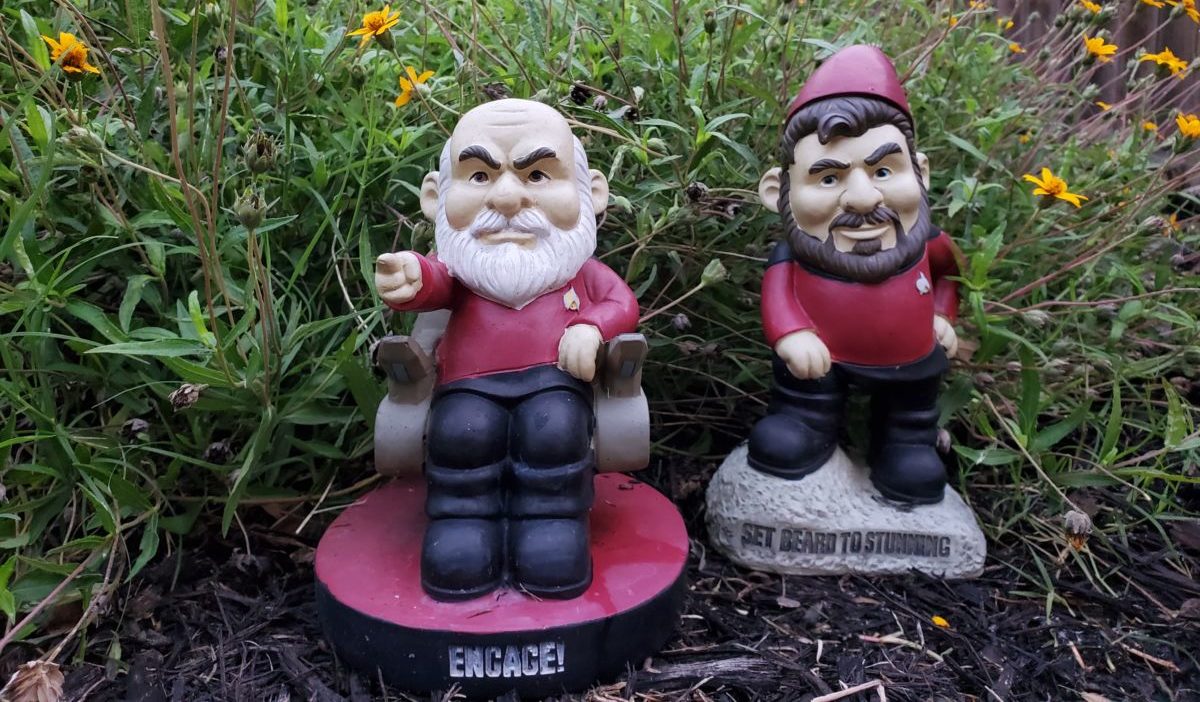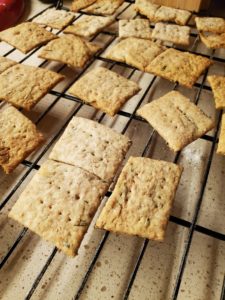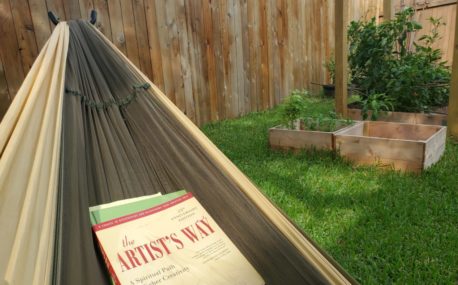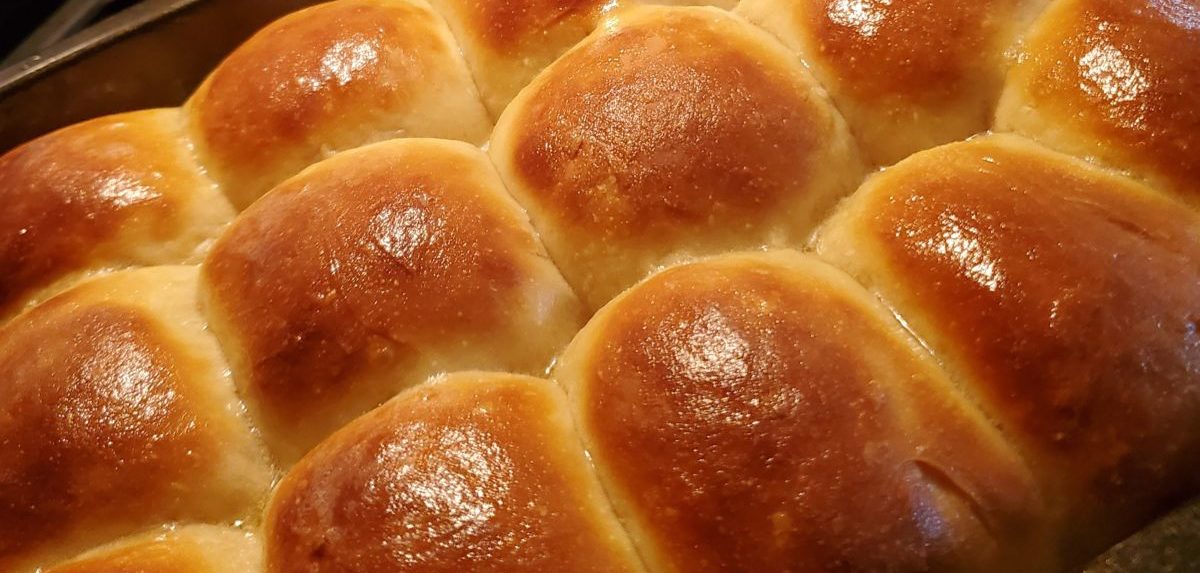
I have a friend I’d like you to meet. She can be an acquired taste. Sometimes a bit messy. To be honest, she can smell a little off if you don’t feed her. Despite all of that, she has become really popular.
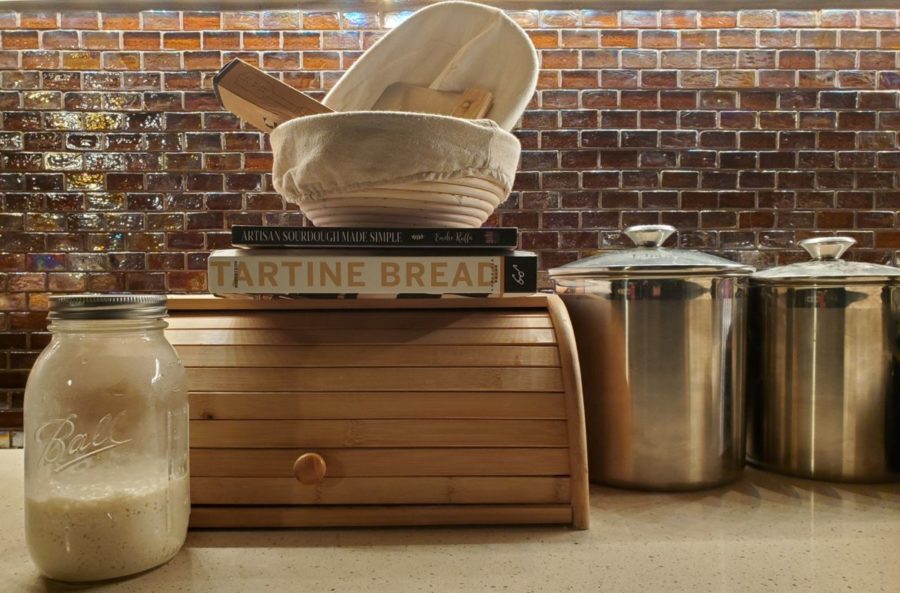
Meet Audrey II, my sourdough starter! (Any Little Shop of Horrors fans out there?)
Before COVID19, us diehard sourdough baking enthusiasts were already out there. Funnily enough, it seemed that I found a small grouping of sourdough people at every party I went to. Once I got into it, people started coming out of the woodwork.
I’ve made many different things, but some of the highlights have been varying breads including hot dog buns and pita bread, focaccia, biscuits, pancakes, bread pudding, cinnamon rolls, pasta…
Now I’m hungry.
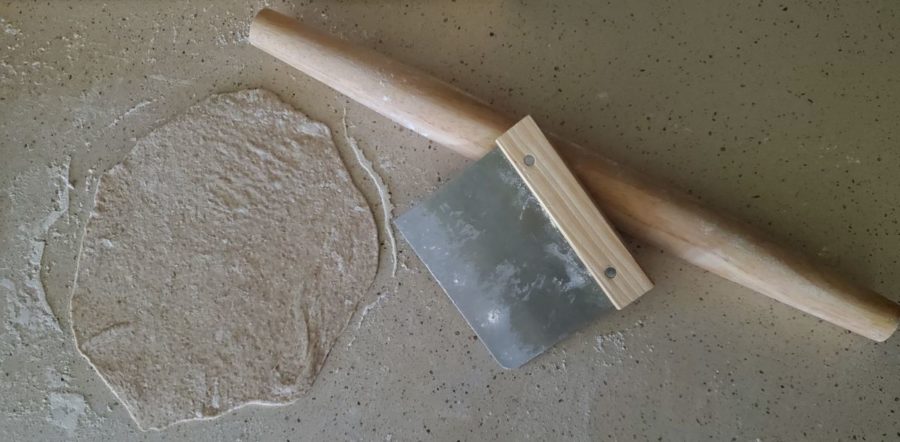
Where to Start
There are a number of bakeries helping people with starter kits – now that this is an option, I definitely recommend it. So many people have asked my trick for sourdough starters because some of their homemade ones have gone funky after some time. Easy – get it from someone else. I went to a great pasta and cider tasting at Texas Keeper Cidery where the chef handed out starters in a to-go bag. It’s been over a year now and my starter keeps chugging along.
If you want added information on baking with sourdough and Google isn’t cutting it, I started with this and thought it was great at explaining the process without getting too much in the weeds:
Artisan Sourdough Made Simple by Emilie Raffa
A really cool exploration into sourdough baking as a lifestyle (yes, this sounds over the top; yes, you should want this for yourself) comes from another book. Warning – this one requires more brain power from you to put the recipe details together, but it does a great job of tempting you into this slower paced way of life. I now use this book for the base of my mainstay bread recipe.
Tartine Bread by Chad Robertson
If you have a starter and it is growing out of control, make sourdough crackers (you’re welcome) – I use fresh herbs from the garden. These crackers are so yummy and don’t require the time to bake that breads do. Also, don’t ask me how but, they last way longer than you’d think before getting stale.

Sourdough as a Lifestyle
Sourdough as a lifestyle, you say?
Sounds a bit much, don’t you think?
Not at all. I am a firm believer that we should all be living the sourdough bread baker life.
I am a sucker for what I refer to as Depression Era hobbies. This is my way of saying that I enjoy doing things that remove the middlemen and allow me to fully appreciate a product from start to finish.
Sourdough is a great example. Take bread, something that is nearly instantaneously accessible in our modern world due to retail companies. Sourdough baking takes it back to its roots. (Or if that’s too rich for your blood, find yourself a local bakery to frequent!)
Sourdough forces you to pay attention to the fundamental mechanics of baking. It’s about spacing your bake out into smaller amounts of time across 1-3 days, adapting your actions based on what you see happening to the starter and dough. Sure, that can sound really intimidating off the bat, but most books and/or recipes will help you chart this out while you get used to the process. It does not take much longer or more focus than ‘instant’ baking, it just spans a longer swatch of time. Personally, I find it relaxing and enjoy weaving the process throughout my other activities.
The usual process looks something like this:
- Feed sourdough starter every 1-2 days (it is a yeast that you feed water and flour)
- Once it has risen the starter can be used in recipes OR wait until it has fallen if the recipe calls for unfed starter – there should be at least a little starter leftover
- Feed the leftover starter
- Feed every 1-2 days OR put in refrigerator until a few days before next bake
If it hadn’t been for that fateful day when a chef literally handed me a starter, I may have never tried sourdough baking. It seemed like more work than it was worth. But now that I have my starter, it is a nice ritual that I enjoy incorporating into everyday life.
Consistently, the message with sourdough is to slow down. Don’t get too distracted. Don’t forget to pay attention and track your progress. Rather than a specific timeframe for each step, you have to watch and adapt. As someone who loves being given crisp, clear directions, I hated this part initially. But eventually you start being able to gauge how long you should wait for the next step based on the temperature in your house and the look of your starter or dough. There’s an odd peace that comes with cultivating that skillset.
Anyone out there trying to use mindfulness more in your day-to-day practices? This is one of the yummiest ways you can accomplish that.
One Last Tip
I couldn’t talk about Audrey II without mentioning one important thing. Do yourself a favor, bread bakers or whole loaf purchasers. Buy. A. Real. Bread. Knife.
Seriously.
Go.
Do it now.
Your bread can slice like butter. It can be cut without smooshing the loaf underneath the weight of your overbearing hand. You don’t have to eat the giant heel of bread all at once. Trust me, this one simple change is pure magic.
Whelp, time to go bake.
